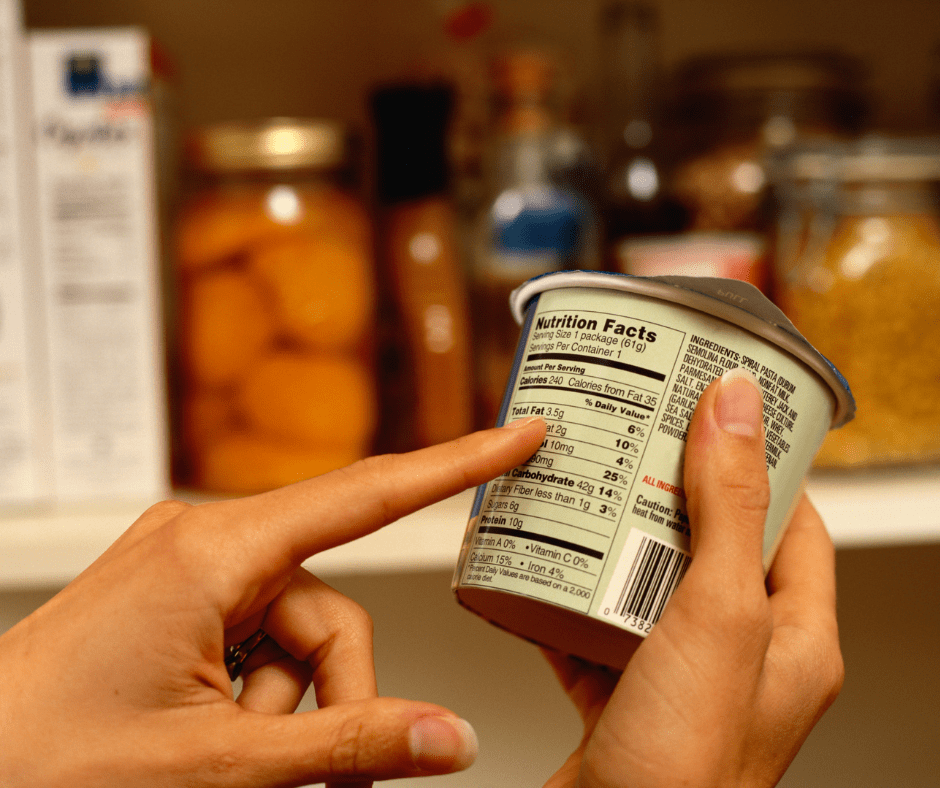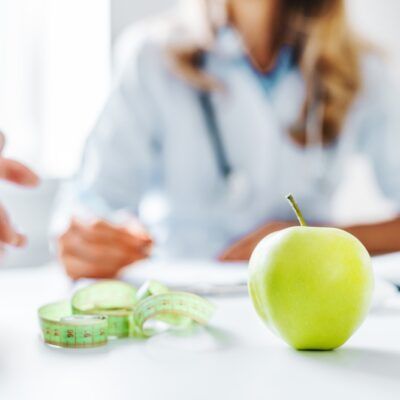As you continue down the food label, sodium is important to look at. A good tip regarding sodium intake would be to make the sure sodium content on the label is less than 140 milligrams per serving or 500 milligrams per meal. This will help you consume below 2,000 milligrams per day.
Next, you should look at the two macronutrients: Carbohydrates and Proteins.
The nutrition label will list total carbohydrates found in one serving. They are then further broken down into fiber and sugar. Remember, fiber and sugar are types of carbohydrates. The difference is, fiber is good and sugar is not. The higher the fiber the better, and the lower the sugar is the better. Added sugars let us know how much sugar was added while processing versus naturally occurring sugars. Things like corn syrup, honey, fruit juice, etc.
When looking at the protein amount—remember, 25-30 grams of protein in one sitting is ideal.
Now, say you go to the store and you need to get in and out pretty fast. You need to be able to quickly scan the label for the nutritional information. Here are four things that you can easily scan for:
Fats
If it is mostly SATURATED and/or TRANS FAT, put it back on the shelf.
If it mostly UNSATURATED, then buy it.
CAUTION: Don’t be fooled if the trans-fat is listed as 0 grams. Up to 0.5 grams is allowed without having to list in on the label. Look at the ingredients list. If you see partially hydrogenated oil and/or shortening listed, then there are trans-fat in it.
Sodium
Is often high in processed foods.
Look for less than 400 mg per serving (which is a third of what you need for the day)
Fiber
Look for at least 3 grams per serving in foods like breads, pastas, crackers, and soup.
Sugar
Look at both the total and the added sugar. In general, look for less than 15g sugar per serving.
Also note, there is a difference between naturally occurring sugar and added like table sugar, corn syrup, etc.
For men, stay under 37.5 grams or 9 teaspoons per day of added sugar
For women, stay under 25 grams or 6 teaspoons per day of added sugar
Remember, reading food labels can be tricky, but is very important.
Don’t get caught up in what the front of the package says—that’s all marketing to make you but the product. Rather, turn the package around and read the nutrition label.
I hope you found this helpful since reading (and interpreting) food labels is important in any weight loss plan. If you are ready to get started on your weight loss journey, contact us at https://healthymeweightloss.com/contact-us/ My team and I can’t wait to meet you!





